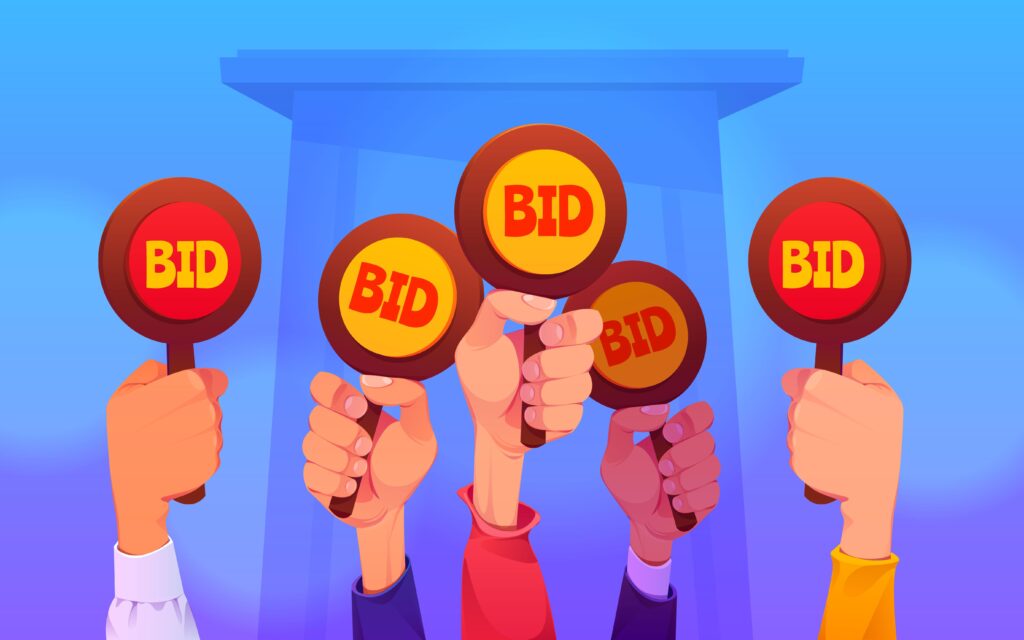Understanding The Federal Contracting System

General Services Administration, also known as GSA, is responsible for acquiring the goods and services needed by federal agencies. As a result, the United States government needs everything and is a super consumer worth 500 billion dollars.
The government uses schedules to purchase goods and services. When there is a need in an agency, it is called a schedule award. A company needs to bid for the award. Once the award is won, it signifies a signed contract between the business and the government.
This means that learning how to bid for these government contracts is extremely important to succeed with this lucrative customer.
The First Step Is Registering With SAM

To do business with the federal government, you must register your business in the System for Award Management directory. The government will not hire any type of business (large or small) that has not been written in the SAM directory.
Please read one of the helpful blog articles on our site, Everything You Need to Know About SAM for Small Businesses. These blogs will help give you all the information you need to understand how we can help make the process easy for you. In addition, Sam Directory will happily guide you through this often confusing process.
Get The Bid Package
After you have ascertained the government contract you want to bid on, you must contact the agency and request a bid package. This package is also often called the solicitation package.
After you receive the package, review it carefully. Find out what the purchasing office wants to buy and determine if your company can meet the requirements.
The Bid Package should contain the following: the buyer’s contact information, including name, address, phone number, and e-mail address, are listed on the bid notice. When you request the bid package, make sure to also ask for amendments.
Where Do You Find Government Contracts For Bidding
Search for opportunities at the following SAM.gov. Federal agencies are required to publish all contracts above $25,000 on SAM.gov. This means that there are many contracts advertised there at any given time.
Contact a procurement officer for information on contracts below the $25,000 threshold for publishing.
Look To Your Local PTAC Office
Procurement Technical Assistance Centers PTACs provide free assistance in government contracting. They will help you identify bidding opportunities and if your company meets specific criteria to work with the government. You can also find out if your business can be certified as 8(a), WOSB., or HUBZone.
New Bidding Techniques
Auction — A government buying technique where the bidding continues until no competitor is willing to submit a far better (i.e., lower) bid. The method is usually mentioned as “reverse auction” because the govt is trying to find a rock bottom price, not the very best price.
It is essential to research and ensure you can cover your costs in an auction process. However, do not get caught up in the moment’s excitement and make calm rational decisions.
Bundling — a way where the government consolidates two or more requirements commonly bought separately into one contract. The support contracts of the many military bases, which require a spread of labor disciplines to stay at the bottom operating, are being bid in this manner.
In bundling, make sure that you carefully read all the provisions. It is essential not to ignore the project management aspect of this type of bidding.
The Bid

The Federal government has the following type of solicitations for bidding:
- Request for Quotation (RFQ). This type is for contracts below $150,000 with a simplified acquisition procedure.
- Request for Proposal (RFP). This type of solicitation asks vendors to propose in response to the government’s request. You can (and often will) discuss delivery details, technical requirements, and specifications with the contracting officer when you bid on that type of solicitation.
- Invitation for Bid (IFB). The “lowest bid wins” or “sealed bid” type of solicitation. No discussion or price negotiation is implied here.
- Request for Information (RFI). This is primarily to research the market and evaluate the interest and capabilities of contractors in a specific niche.
Be sure you read the solicitation requirements carefully. A solicitation package will include documents, technical conditions, attachments, and more. There are standard contracting forms for most federal government contracts under RFP and IFB solicitations. As for needed documents, they are listed in the solicitation.
Contact your contracting officer if you have questions. You must understand everything about the solicitation you are bidding on. Also, look to FARs (Federal Acquisitions Regulations) that govern the solicitation you are to respond to ensure you know the regulations and requirements.
Small Business Administration Certifications
A Small Business Administration certification is an excellent way for your business to stand out in the marketplace. Certifications can help you access specialized funding and scholarships, allow you to compete for set-aside contracts, and can be a great bonus to potential clients. Here are some certifications to consider for your small business:
- Women-Owned Small Business Federal Contract Program (WOSBs)
- 8(a) Business Development Program
- The Service-Disabled Veteran-Owned Small Business Concern Procurement Program(SDVOSB)
- Historically Underutilized Business Zone Program (HUBZone)
Networking

Sometimes the most challenging step is getting your foot in the door. Networking is vital when trying to secure government contracts. The Small Business Administration (SBA) is a great resource and hosts many events throughout the year. These events are usually at no cost to business owners and can offer a treasure trove of information about obtaining contracts from various agencies.
This is your opportunity to shine, so make sure you are prepared to present an elevator pitch to define your company better. This speech explains what your business has to offer and how you can help another organization meet its goals. It should be short and simple, no longer than a 30-second elevator ride.